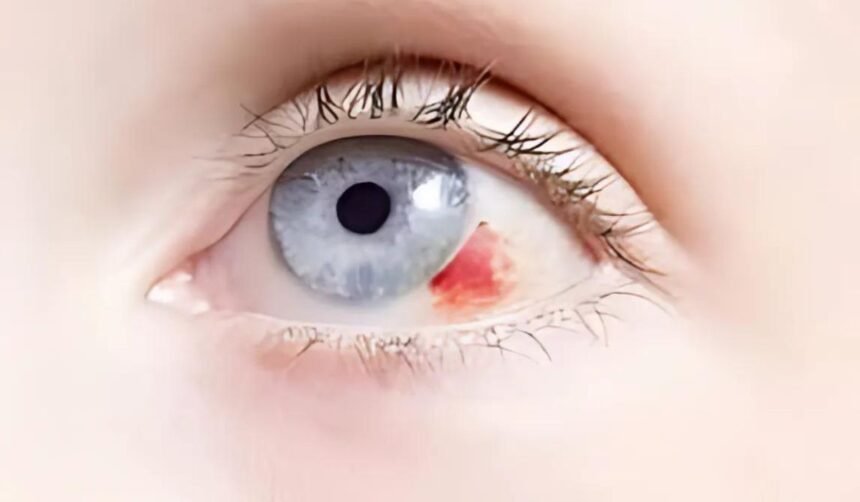Introduction to Bloodshot Eyes
Having bloodshot eyes, often called “conjunctival hyperemia,” can be an alarming condition for many individuals. Whether it happens due to a long workday staring at a computer or waking up to find your eyes red and irritated, bloodshot eyes can lead to discomfort, impaired vision, and concern about underlying health issues. The phrase “its eyes are bloodshot pagalworld” has sparked curiosity, as people seek information on how to prevent and treat this common eye issue. Bloodshot eyes occur when the tiny blood vessels on the surface of the eye become enlarged and more prominent. Though often harmless, they can sometimes indicate an underlying problem requiring attention.
In this article, we will cover everything you need to know about bloodshot eyes, exploring the various causes, symptoms, treatments, and when to seek medical help. Let’s dive deep into the condition to understand why your eyes may appear bloodshot and what you can do to resolve it.
1. Understanding Bloodshot Eyes
Bloodshot eyes, medically referred to as conjunctival hyperemia, result from irritation or inflammation of the eye’s surface. When the blood vessels within the whites of your eyes (sclera) swell or expand, it causes the eye to appear red or bloodshot. This redness can be localized to a small area or spread across the eye.
The keyword “its eyes are bloodshot pagalworld” helps to bring attention to this common concern many face. Understanding the triggers behind bloodshot eyes is key to ensuring proper treatment and care.
2. Common Causes of Bloodshot Eyes
There are many reasons why bloodshot eyes may occur. Some are minor, while others require immediate medical attention. Here are some of the most common causes:
a. Dry Eyes
Dry eyes are one of the leading causes of bloodshot eyes. When the eyes don’t produce enough tears, or the tears evaporate too quickly, it causes dryness, leading to irritation and redness.
b. Allergies
Allergic reactions to pollen, dust, pet dander, or smoke can also cause your eyes to become red and itchy. Bloodshot eyes often accompany other allergy symptoms such as sneezing, nasal congestion, and watery eyes.
c. Eye Fatigue
Prolonged screen time, insufficient sleep, or excessive reading can strain the eyes, causing the blood vessels to become more visible, leading to redness. This condition is referred to as eye fatigue or digital eye strain.
d. Conjunctivitis (Pink Eye)
Conjunctivitis, commonly known as pink eye, is an inflammation of the conjunctiva, the thin layer covering the eye’s surface. It is often caused by bacterial or viral infections and is contagious. The hallmark sign of conjunctivitis is bloodshot eyes, accompanied by discharge and discomfort.
e. Contact Lenses
Wearing contact lenses for extended periods or not cleaning them properly can irritate the eyes, leading to redness. The eye may develop an infection or become dry, which further exacerbates the problem.
3. Symptoms Accompanying Bloodshot Eyes
While “its eyes are bloodshot pagalworld” is a frequent search term related to red eyes, knowing the associated symptoms can help determine the severity of the condition. Aside from the red appearance of the eyes, you may experience:
- Itching or Burning: This discomfort is common in allergy-related bloodshot eyes.
- Watery Discharge: In the case of viral infections or allergies, the eyes may produce excessive tears.
- Eye Pain: Red eyes accompanied by pain could suggest a more serious condition such as glaucoma or a corneal ulcer.
- Blurry Vision: Bloodshot eyes caused by eye infections may lead to temporarily blurred vision.
- Sensitivity to Light: If the eyes are overly sensitive to light, it could indicate underlying inflammation or infection.
If any of these symptoms are present along with your bloodshot eyes, it’s essential to address the root cause quickly.
4. Home Remedies for Bloodshot Eyes
In many cases, bloodshot eyes can be managed with simple at-home treatments. Here are a few remedies to try:
a. Cold Compress
Applying a cold compress to your closed eyes can reduce redness and inflammation. Cold helps constrict blood vessels, minimizing their appearance and providing relief from irritation.
b. Artificial Tears
Over-the-counter artificial tears can help soothe dry eyes and reduce redness. Look for preservative-free options for frequent use.
c. Rest Your Eyes
If eye fatigue is the culprit, give your eyes some time to rest. Limit screen time, take breaks during reading, and make sure you get enough sleep at night.
d. Avoid Irritants
If allergies or environmental factors such as smoke or dust are causing your bloodshot eyes, avoid exposure to these irritants. Wearing sunglasses can help protect your eyes from airborne particles.
5. Medical Treatments for Bloodshot Eyes
When bloodshot eyes persist despite home remedies or are accompanied by other concerning symptoms, it’s crucial to seek professional medical advice. Several treatments may be recommended depending on the underlying cause:
a. Prescription Eye Drops
For allergies, infections, or other inflammatory conditions, your doctor may prescribe eye drops to reduce inflammation or clear up infections. These may include antihistamines, antibiotics, or corticosteroids.
b. Punctal Plugs for Dry Eyes
If chronic dry eyes are behind the redness, a doctor might recommend punctal plugs. These small devices are inserted into the tear ducts to help maintain moisture in the eye.
c. Antihistamines
In cases where allergies are causing your eyes to appear bloodshot, antihistamine medications (oral or eye drops) can alleviate the symptoms.
6. When to See a Doctor
Although “its eyes are bloodshot pagalworld” highlights a common issue, there are times when medical attention is essential. If you experience any of the following along with bloodshot eyes, see a doctor immediately:
- Severe pain in the eye
- Changes in vision (e.g., blurred vision or loss of vision)
- Sensitivity to light
- Eye discharge (especially thick or yellowish in color)
- Foreign object in the eye
These symptoms could indicate more serious conditions such as glaucoma, corneal ulcers, or an eye infection requiring prompt treatment.
7. Preventing Bloodshot Eyes
Prevention is the best way to avoid dealing with bloodshot eyes. Here are some steps you can take to keep your eyes healthy:
a. Proper Hygiene
Wash your hands frequently, especially before touching your eyes. This reduces the risk of infection.
b. Use Protective Eyewear
If you’re exposed to irritants such as chemicals or pollen, wearing protective eyewear can help shield your eyes from harm.
c. Manage Screen Time
Prolonged screen time can strain your eyes. Follow the 20-20-20 rule: every 20 minutes, look at something 20 feet away for at least 20 seconds.
d. Stay Hydrated
Drinking plenty of water helps maintain tear production, which can prevent dryness and irritation.
e. Use Humidifiers
Dry air, especially in heated indoor environments, can lead to dry eyes. Using a humidifier adds moisture to the air, helping your eyes stay hydrated.
8. Conclusion
Bloodshot eyes are a widespread condition that most people will experience at some point in their lives. While “its eyes are bloodshot pagalworld” may lead you to search for answers online, understanding the root causes and how to treat them is key to maintaining good eye health. Whether it’s due to allergies, fatigue, dry eyes, or an infection, many cases of bloodshot eyes can be easily resolved with simple home remedies or over-the-counter treatments. However, if the condition persists or is accompanied by pain or vision changes, it’s vital to consult a medical professional.
Take steps to prevent bloodshot eyes by practicing good eye hygiene, protecting your eyes from irritants, and managing your screen time. By staying proactive, you can ensure your eyes stay healthy and bright.
FAQs
What are the main causes of bloodshot eyes?
- Bloodshot eyes are often caused by dry eyes, allergies, eye fatigue, infections like conjunctivitis, or irritation from contact lenses.
Are bloodshot eyes dangerous?
- In most cases, bloodshot eyes are harmless and resolve on their own. However, if accompanied by pain or vision changes, you should consult a doctor.
Can I treat bloodshot eyes at home?
- Yes, many cases can be treated with cold compresses, artificial tears, and resting your eyes. Avoid irritants such as smoke or dust.
When should I see a doctor for bloodshot eyes?
- If bloodshot eyes are paired with pain, changes in vision, or thick discharge, it’s essential to seek medical help.
How can I prevent bloodshot eyes?
- Prevent bloodshot eyes by avoiding irritants, staying hydrated, using a humidifier, managing screen time, and practicing good eye hygiene.
Do allergies cause bloodshot eyes?
- Yes, allergic reactions to pollen, dust, or pet dander are common causes of bloodshot eyes, often accompanied by itching and tearing.










